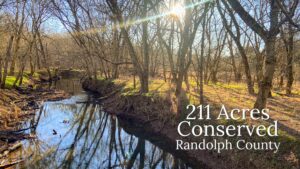
by Crystal Cockman
November 22, 2016

The whooping crane (Grus americana) is the tallest bird in North America and one of the most endangered birds, as well. They have a long neck and long legs, standing up to 5 feet tall with a wingspan of up to 7.5 feet. Adults are bright white with red accents on their heads. Juveniles are mottled brown in color. Their legs, bills, and wingtips are black. The species declined to about 20 birds in the 1940s but has increased to over 600 today. The whooping crane is one of only two cranes found in North America, the other being the Sandhills crane. The whooping crane was declared endangered in 1967. They are endangered largely due to habitat loss and being illegally shot.
Whooping cranes take their name from their distinctive whooping call. The sound can carry over several kilometers, and it is used to declare their breeding territory to other whooping cranes. Whooping cranes are omnivores and eat seeds, plants and grain as well as small fish, frogs, snakes, and crustaceans.
The naturally occurring wild flock of birds winters in and around Aransas National Wildlife Refuge on the Gulf coast of Texas, and fly north in the springtime to nest in Wood Buffalo National Park, which straddles the border of Alberta and Northwest Territories in Canada. Because this is the only population of naturally occurring wild whooping cranes, disease or other disaster could potentially whip them out. The Whooping Crane Eastern Partnership has worked to establish an Eastern Migratory Population of whooping cranes.
Precocial birds like geese, swans and cranes learn to migrate from their parents. The flight they take may have evolved over millions of years, but it is passed on from one generation to the next, and when the last bird to take that route dies the knowledge is gone, as well. However, thanks to the efforts of some early pioneers, it was found out that birds, at first geese, could be trained to follow ultralight aircraft.
An organization called Operation Migration started in 1994, and began conducting migration experiments with geese, tundra swans, Sandhills cranes, and whooping cranes. The results with Sandhills cranes were provided to the International Whooping Crane Recovery Team, and researchers had discovered they could imprint a crane species with a pre-selected migration route to specific wintering grounds, and the next spring the birds would fly back on their own. Operation Migration was tasked to help establish a second eastern migratory population of whooping cranes. The Whooping Crane Eastern Partnership was founding in 1999, and they also began working on this effort.
Necedah National Wildlife Refuge in Wisconsin was selected as the reintroduction site and Chassahowitzka NWR in Florida as the wintering grounds. Between these two locations was 1250 miles and seven states. In 2000 the route was flown with Sandhills cranes. In 2001, seven experimental population whooping cranes were led to Florida, and 6 returned to Wisconsin (one having been eaten by a bobcat). In 2005, whoopers were released near to birds that had already learned the route, and in 2006 the first wild chick was born and followed its parents to the wintering grounds in Florida. This was the first wild migratory whooping crane born in the eastern US since 1878.
The population was slow to reproduce, and as of 2015 only 10 chicks had surveyed until they were capable of flight. In early 2016, the US Fish and Wildlife Service ended the aircraft-guided reintroduction method because it was believed it was too artificial and cranes that were raised by hand missed early learning opportunities and did not nurture or care for their chicks when they had their own offspring. However, releases into Wisconsin will continue, with chicks raised at captive centers by adult whooping cranes.
Operation Migration and the Whooping Crane Eastern Partnership believe that this Eastern Migratory Population will be successful, and whooping cranes will continue to expand in population. These birds survived as a remnant of Pleistocene megafauna, so they have been around for a long time. As a result of the hard work of many, hopefully this beautiful and ancient bird will be around for many more generations. One was spotted a few years ago on a Wildilfe Resources Commission property in Richmond County, so if recovery efforts continue and are successful, its possible you could see one of these magnificent birds yourself in the future.